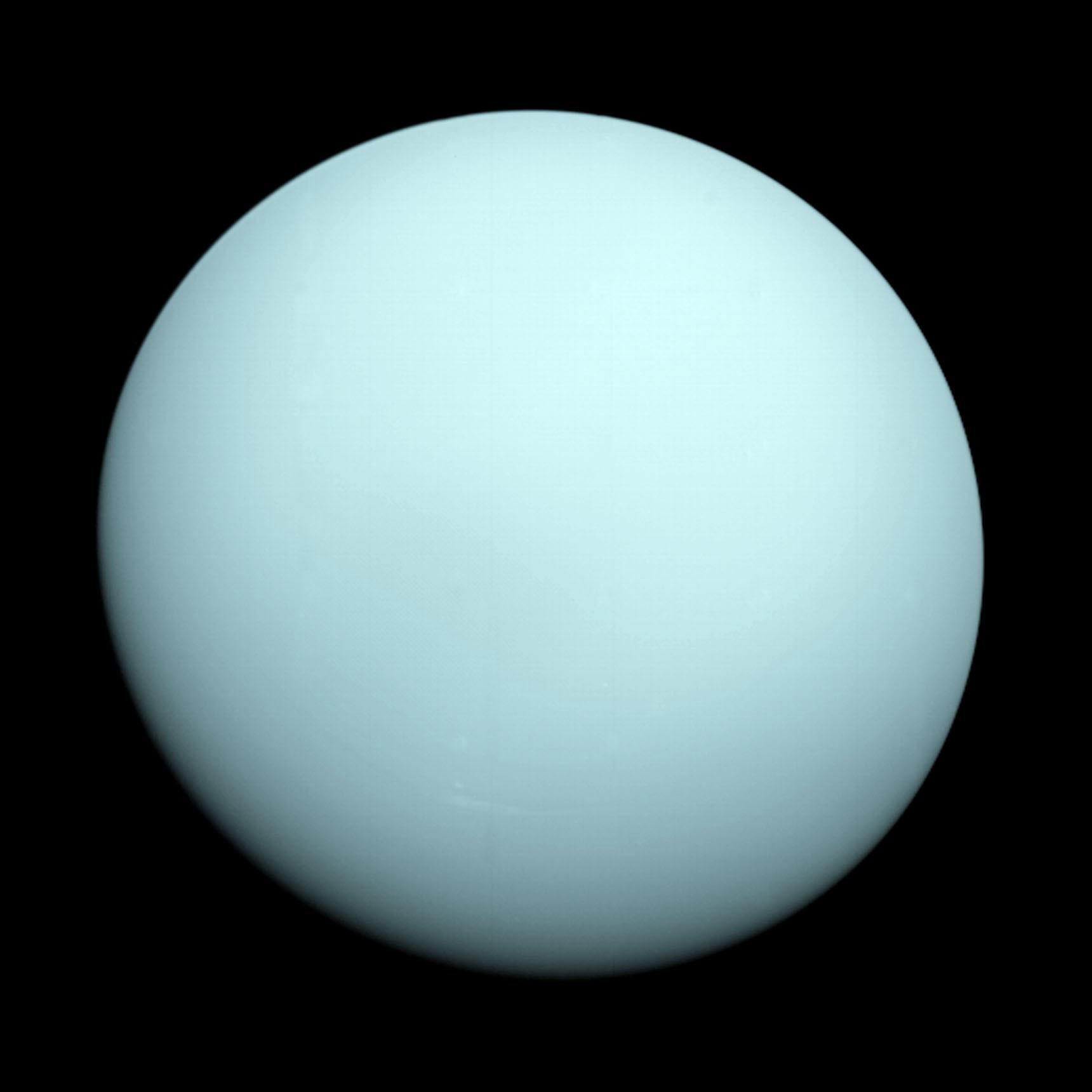Scientists Want to Probe Atmospheres of Uranus and Neptune

It's been decades since a spacecraft visited either Uranus or Neptune — which means scientists are busy dreaming up instruments that could be flown out on the next probe to these ice giants.
The pair of planets haven't had a robotic visitor since the Voyager 2 flybys in 1986 and 1989. And in the decades that have passed since NASA designed and built that spacecraft, technology has become both much more powerful and much smaller, and the agency has plenty more missions under its belt.
"Available materials, filters, electronic detectors, flight computing, and data management and processing have all improved," Shahid Aslam, who designs flight hardware at NASA's Goddard Space Flight Center in Maryland, said in a statement. "Frankly, we have better technology all the way around. It's clear that the time is now to develop the next generation of this instrument for future atmospheric entry probes."
Related: Next Stop, Triton? Here's Two Wild Ideas to Explore Neptune's Weirdest Moon
Specifically, Aslam and his colleagues want to model a new device on one packed aboard a probe sent to Jupiter as part of the Galileo mission, which traveled through the upper layers of the gas giant's atmosphere in 1995. That probe survived for nearly an hour, traveling 124 miles (200 kilometers) deep into Jupiter's clouds before being destroyed in the planet's harsh atmosphere.
Interpreting the probe's data posed its own challenges: because scientists were only looking at data from one location, they couldn't be sure whether what they saw was representative of Jupiter's atmosphere at large. But still, an instrument called a net flux radiometer on board helped scientists to understand the different atmospheric layers the probe passed through.
By upgrading and adapting the Galileo instrument to suit the unique conditions in the atmospheres of Uranus and Neptune, Aslam and his team hope they might gather crucial data about how these ice giants work. Both of their atmospheres are full of hydrogen, helium and methane, but although Uranus doesn't seem to produce heat at its core, Neptune does, and its atmosphere is full of storms as a result. Studying the two planets with a net flux radiometer could explain some of these observations.
Breaking space news, the latest updates on rocket launches, skywatching events and more!
But right now, the instrument doesn't have a spacecraft to fly on: NASA doesn't have any formal missions to either ice giant in the works right now.
- Photos of Neptune, The Mysterious Blue Planet
- Why Is Uranus on Its Side? Incredible Simulations Could Solve the Mystery.
- Photos of Uranus, the Tilted Giant Planet
Email Meghan Bartels at mbartels@space.com or follow her @meghanbartels. Follow us on Twitter @Spacedotcom and on Facebook.

Meghan is a senior writer at Space.com and has more than five years' experience as a science journalist based in New York City. She joined Space.com in July 2018, with previous writing published in outlets including Newsweek and Audubon. Meghan earned an MA in science journalism from New York University and a BA in classics from Georgetown University, and in her free time she enjoys reading and visiting museums. Follow her on Twitter at @meghanbartels.
